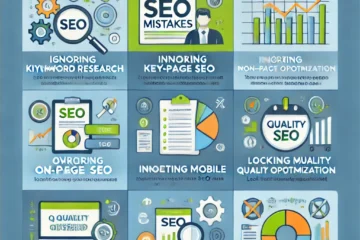Understanding backlinking can be a big challenging, what are good backlinks, bad backlinks and blackhat backlinks? Backlinks right now, are in a very muddy state of affairs. Google is getting better with handling some aspects of manipulation, but backlink optimization is still needed. There are networks of blackhat backlink services that are still claiming victims because they can show some ranking improvements.
Google is good at detecting spammy backlinks, but some services in various niches are able to slide under Google’s radar and can help a website’s SEO. The end result is, client’s who aren’t in the know are sold backlinks that at first do wonders but once found out can tank keyword rankings, leaving website owners dumbfounded. Then there are times when you do what’s called a guest post or link affiliation listing, like “Affordable SEO Services for Small Business” this is an agency directory listing, and they offered to list this site on their listing as long as I mentioned their brand and listed it here, for these types of posts you need to make sure you declare to Google and other search engines, that this was the intention of the backlinking by labeling it as nofollow / sponsored. The company that reached out for this listing is called DesignRush.
What Is A Good Backlink?
A good backlink just means all criteria from search engine guidelines are being followed. If a backlink is bought as part of a linkbuilding service, that backlink should be ” nofollowed ” by Google’s standards. Otherwise Google will deem the backlink to be part of a link scheme and a manual penalty could result or just a devaluation of keywords used for the backlink’s anchor text.
A Few Variables Determine A High Quality Backlink:
- Relevancy – All search engines are looking for content relevancy, since it’s a good way to find spammy relationships when keywords don’t align.
- Trust – Different than user trust, search engine trust from other more popular domains linking as well as other variables like domain age and content freshness.
- Diversity – Just as it sounds, if all a website’s backlinks are from a handful of websites, then those backlinks will not carry as much value. Backlink diversity can also mean differences in anchor text, dofollow and nofollow links.
- Authority – Search engines have their own special way to determine a domain’s authority, such as the amount of trust domains linking back to a website is a good indicator of trust.
How To Tell A Backlink Is Blackhat?
Blackhat backlinks will stand out most times by not looking like they belong. Many times links from porn sites, hacked websites, directories and even foreign websites will be some tip offs to warrant further investigation. Some 3rd party indexing sites like AHREFs and Moz have backlink checkers. From Experience AHREFs is going to be the best, but by NO MEANS is it 100% accurate. Remember indexing the web currently isn’t possible even by Google yet, that’s a resource logistical nightmare.
The best way is still a good ole fashion backlink audit by a professional SEO. Dissecting backlinks from Google search console management and AHREFs combined will be a good start. Then go through each link and give it a score in a spreadsheet with notes on what was seen. A more detailed picture will emerge that will make disavowing much easier. Spammy backlinks will start to stand out and those backlinks that don’t belong will become more clear. Basically any backlink that doesn’t help the user, isn’t relevant, or uses all exact match anchor text is a sign to investigate further.
Why Do Bad Backlinks Improve Rankings?
Many times Google and other search engines haven’t found that website or blackhat service yet. That’s why it’s important to use the Google webspam reporting tool when it’s found. It’s basically the equivalent to bug bounties for webmaster and SEOs. The sooner they’re found the more fair the search engine landscape becomes. Just like any exploit of opportunity, blackhat SEOs are always looking for the ” next vulnerability “. Often bigger blackhat networks will prevent searchbots from crawling certain layers, creating pockets of hidden domains that are really the hub of a larger hub and spoke model.
A bigger reason as to why bad backlinks still work is that the level of understanding has changed. No more are people in the dark about what to look out for and many skate a fine line avoiding detecting by Google. Bigger websites will get smacks on the wrist it seems while more spammy in nature sites are basically deindexed. What many will do is, buy backlinks and send them to one domain and then have that domain link back to the money site.
The thinking is, if the backlinking website and website it linked too gets hit, the money site will just loose the initial keyword boost and not be penalized. However this is a risk since all it takes is a disgruntled competitor to report the domain to webspam or an eventual human error. At any rate, it’s not worth it, you can rank a website with minimal backlinks by having finely tuned on page SEO and great social and user signals.
How Is Your Website Backlink Profile?
Contact SEOByMichael or schedule an SEO audit consult to find out the health of your backlink profile!


